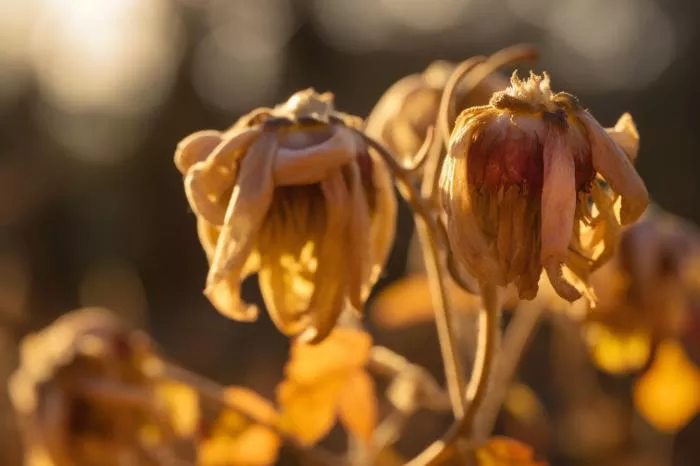A recent study published in the journal Plant Biology has uncovered a fascinating aspect of plant biology: certain plants actively reuse resources from wilting flowers to support future reproductive cycles. This finding, a first in plant research, sheds light on how plants manage resources strategically for long-term survival and reproductive success. The study was conducted by researchers from Macquarie University, led by Honorary Professor Graham Pyke, in collaboration with international scientists.
Reclaiming Resources for Reproduction
Professor Pyke explains that the research presents the first evidence that plants can repurpose resources from wilting flowers to enhance future reproductive efforts. The findings contribute to understanding a commonly observed but previously poorly understood plant process.
“Our research delivers the first direct demonstration that plants can salvage resources from wilting flowers and reuse these resources to promote future reproduction,” Pyke says.
These reclaimed resources include the energy and nutrients found in the petals—carbohydrates and essential nutrients like nitrogen and phosphorus. This resource recycling is a novel approach to maximize efficiency in resource management, enabling plants to invest in their future flowering seasons.
Running the Trials on Christmas Bells
The three-year study focused on the Blandfordia grandiflora, or Christmas bells, a perennial species native to eastern Australia that typically flowers in December. Recognizable by its bright red and yellow blooms, Blandfordia grandiflora is often sold in flower markets domestically and internationally, with some commercially grown stems producing up to a dozen flowers.
The research was conducted on both natural and controlled settings. “Our research takes place on a plantation containing several hectares of native wet heath where Christmas bells flower quite profusely, along with a commercial shadehouse,” explains Professor Pyke.
To study resource reuse, researchers controlled pollination and wilting of flowers and then examined the impact on seed production and reflowering. Surprisingly, the findings showed that plants did not use resources from wilted flowers to enhance short-term reproduction, either for the same flowers or other flowers on the same plant.
Instead, Blandfordia grandiflora reallocated resources from wilting flowers by storing them underground in corms and roots. These stores of ‘chemical energy’ are reserved to help produce new flowering stems the following season, typically a year later.
The Economics of Plant Resource Management
According to Professor Pyke, plants operate in a world of limited resources where strategic allocation is essential. “Plant economics are all about trade-offs,” he explains. “Plants must make decisions about where to allocate their limited resources; investing in one area means they can’t invest as much in another.”
This focus on resource allocation prompted Professor Pyke to explore why flowers wilt—a process often assumed to help plants redirect resources to other vital functions. What the team discovered was unexpected: rather than redirecting resources immediately, the plants saved them for use in the next flowering season.
“Plants were playing a longer game than we anticipated, not using their reclaimed resources immediately but saving them for future flowering,” Pyke remarks.
This behavior reflects just one of many strategies plants employ for post-reproductive flower management. While wilting is one approach, not all plants follow this pattern. Some keep flowers in bloom even after they stop being fertile or cease producing nectar. In such cases, the flowers contribute to the plant’s attractiveness to pollinators, enhancing overall reproductive success.
Other plants follow a different path entirely. For instance, jacarandas and frangipani trees shed their blooms even when they appear healthy, a strategy that could serve purposes beyond resource conservation.
Testing Theories of Resource Reuse
The study involved several experiments to verify how Blandfordia grandiflora manages resource reuse. In one trial, researchers compared seed production between plants that were allowed to let flowers wilt naturally and those where petals were removed early to prevent wilting. In another experiment, they prevented seed production in all flowers but allowed wilting in one group.
“We can easily prevent seed production by snipping off the stigma,” Pyke explains.
The results confirmed that plants with wilting flowers were more likely to reflower the following season compared to those where wilting was inhibited. Additionally, the study examined other factors influencing seed production, such as stem height, flower count per stem, and the position of flowers.
Data showed that taller flowering stems generally produced both a higher number and heavier seeds, while stems with more flowers also yielded more robust seeds. Conversely, flowers located lower on the plant tended to produce fewer and lighter seeds.
Paving the Way for Future Research
The study’s groundbreaking findings open up new directions for plant biology research, especially concerning how plants optimize their reproductive strategies over time. “Our findings pave the way for further research into other plant species, and how they recover and reuse the resources from wilting flowers,” says Professor Pyke.
Future research could delve deeper into understanding what specific resources are salvaged, the processes by which plants transport and transform these resources, and the overall cost-benefit balance of investing in flower production only to reclaim these resources later.
Understanding these mechanisms could have significant implications, not only for botany but for agriculture and horticulture, where maximizing plant health and productivity is essential. As researchers continue to uncover the resourcefulness embedded within the plant kingdom, the insights gained may lead to more sustainable practices for managing plant growth and resilience in various environments.
Related topics:


